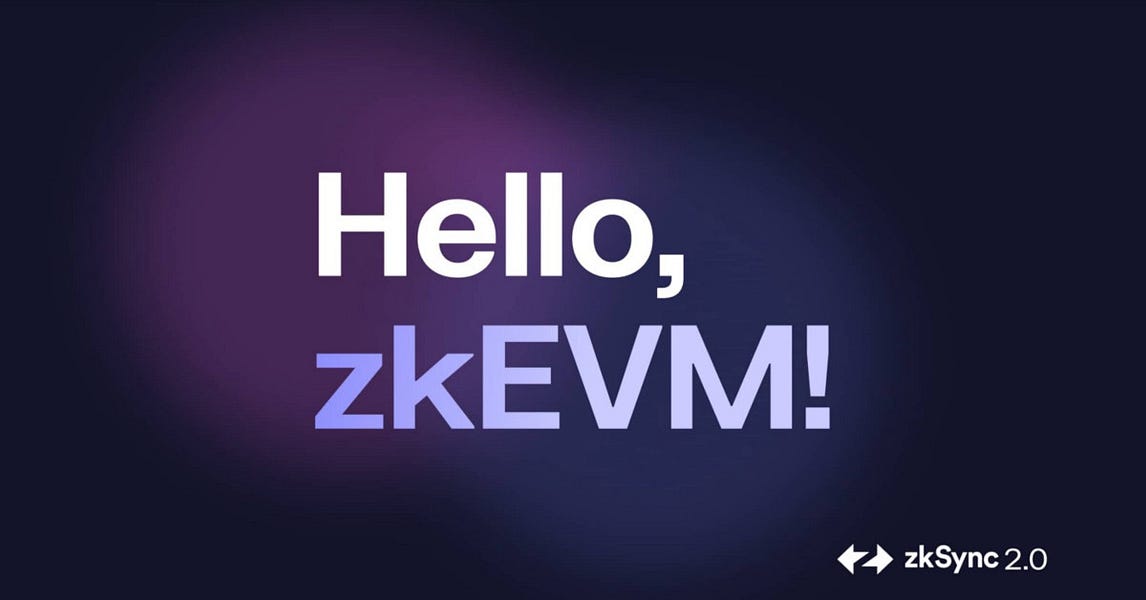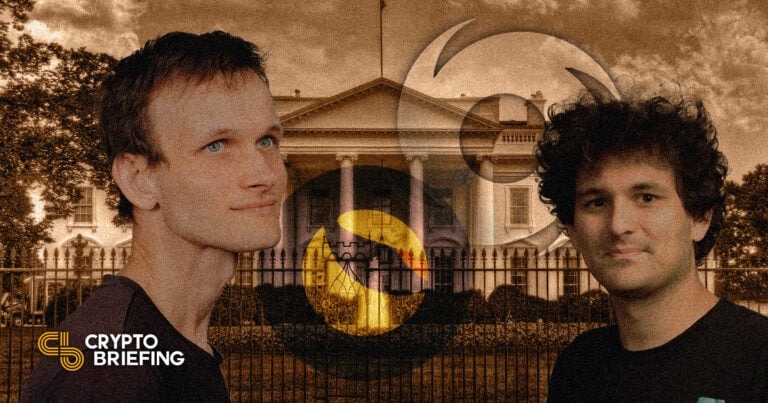Metaversal is a Bankless newsletter for weekly level-ups on NFTs, virtual worlds, & collectibles
Subscribe now
Dear Bankless Nation,
The future of Ethereum is scaling via rollups.
And a special class of rollups — zk rollups that are compatible with the Ethereum Virtual Machine — are the most promising way to bring about that future as things stand.
Looking ahead, it’s accordingly no stretch to predict that “zkEVM” solutions will be adoption game changers for web3 projects in general, including NFT projects.
Take note, then, because not one, not two, but three different teams announced big zkEVM developments this week! Let’s break down these advancements and touch on what NFT users can expect in the zkEVM arena going forward.
-WMP
🙏 Sponsor: Sequence—developer platform + smart wallet to build user-friendly web3 apps✨
“In general, my own view is that in the short term, optimistic rollups are likely to win out for general-purpose EVM computation and ZK rollups are likely to win out for simple payments, exchange and other application-specific use cases, but in the medium to long term ZK rollups will win out in all use cases as ZK-SNARK technology improves.” — Vitalik Buterin, An Incomplete Guide to Rollups
July 20th 2022
Rollups are layer two (L2) scaling solutions, in that they work above the Ethereum “layer one” to make Ethereum-based transactions very affordable and very rapid. The two most popular types of rollups today are optimistic rollups and zero knowledge, or zk, rollups.
Both types execute transactions off-chain, i.e. outside of the Ethereum L1, and both types also inherit Ethereum’s extensive security guarantees by posting their batched transaction data to Ethereum. Where optimistic and zk rollups differ is in how they facilitate posting data, i.e. fraud proofs or zero-knowledge validity proofs, and in what advantages they can provide to users.
Out of the gate, Optimistic rollups have been well suited for “general-purpose EVM computation,” meaning Ethereum projects — like NFT projects — can easily port over L1 smart contracts written in Solidity or create L1-like smart contracts on these L2s.
In contrast, zk rollups are incredibly efficient and secure, and they’re poised to become even more so over time, but to date certain design nuances have meant these rollups haven’t offered EVM compatibility.
July 20th 2022
All that said, a zk rollup with an EVM-compatible execution environment is a zkEVM. No such projects have come into action so far, so that’s why zkEVM advancements represent the “holy grail” for zk rollups: they will finally allow these L2s to combine general-purpose EVM computation with the extensive transaction efficiencies afforded by zero-knowledge proofs.
This sort of leveling up will help zk rollups “win out in all use cases” over the long term as Vitalik Buterin has predicted will happen. And now, “all use cases” encompasses a teeming NFT ecosystem. But before we talk about the implications of the zkEVM + NFTs, let’s briefly walk through this week’s developments to see how the zkEVM future is coming to fruition in the here and now.
On Monday, July 18th, the Scroll team unveiled a pre-alpha testnet for its zkEVM-based zk rollup, eponymously named Scroll:
“Scroll’s plan for scaling Ethereum and serving billions of users and developers is a long-term roadmap that requires careful consideration and execution. We firmly believe in the future of the zkEVM as a key to scaling Ethereum, and as such, are committed to releasing it in a way that allows us to work through any challenges in a focused manner and incorporate feedback alongside our roadmap.”
Then on Wednesday, July 20th, two other major zkEVM announcements were made:
zkSync builders Matter Labs revealed that zkSync 2.0, a zkEVM-based zk rollup, “will be live on mainnet in 100 days.”
July 20th 2022
Polygon introduced an initial open-source implementation for the Polygon zkEVM, and a public testnet is forthcoming. Notably, this zk rollup was designed not just for EVM-compatibility but full EVM-equivalence, meaning writing code and using tooling on this zk rollup will effectively be indistinguishable from the UX of doing the same on Ethereum. This dynamic will be very user-friendly for web3 builders.
We’re moving toward a future in which zkEVM-based zk rollups will become the gold standard for scaling web3 projects.
In being underpinned by cryptography rather than economic incentives, zk rollups are more secure than their optimistic rollup counterparts. For multiple use cases, zk rollups also offer drastically cheaper transaction costs. Additionally, withdrawing NFTs from a zk rollup can take as fast as 15 minutes compared to the ~1-week wait time that optimistic rollups require.
As such, fast and super affordable transactions + high cryptographic security guarantees + general-purpose EVM computation + quick NFT withdrawals = zkEVMs being uniquely suited L2 infrastructure to support widespread mainstream adoption of NFTs.
Indeed, a bottleneck on the early NFT ecosystem has been the technical limitations, and ensuing UX pains like costly transactions, of the Ethereum L1. The arrival and evolution of zkEVMs will help destroy this bottleneck once and for all and let NFT projects readily offer Ethereum-based experiences to millions of users, i.e. anyone, and not just hundreds or thousands.
July 21st 2022
It’s also worth noting that this zkEVM future is poised to get even brighter going forward. For example, Ethereum’s hugely-anticipated Merge update is set to take place later this year, but it’s hardly the end of the leading L1’s technical roadmap. After The Merge will come The Surge, which will introduce massive scalability improvements to rollups via sharding:
December 2nd 2021
That means ultra performant L2s with ultra cheap transactions are now around the corner, and this evolution will decisively ready NFTs for the world stage. Longer term, Ethereum itself is likely to migrate from the EVM to a zkEVM format, so the future of NFTs in multiple senses is set to run through zkEVMs. Sometimes in crypto you get a crystal-clear opportunity to envision what’s to come, and this is certainly one of those times.
⛓️ Check out this week’s Scroll, zkSync 2.0, and Polygon zkEVM announcements
🙇 Read my previous write-up NFT drop styles if you missed it!
William M. Peaster is a professional writer and creator of Metaversal—a Bankless newsletter focused on the emergence of NFTs in the cryptoeconomy. He’s also recently been contributing content to Bankless, JPG, and beyond!
Subscribe to Bankless. $22 per mo. Includes archive access, Inner Circle & Badge.
Subscribe now
Build user-friendly web3 applications with ease and deliver a seamless web3 experience to your users! Sequence is a comprehensive developer platform and smart wallet for the Ethereum + EVM ecosystem.
Seamless and secure onboarding
No gas fees for your users
Direct NFT purchase with credit/debit
NFT marketplace protocol, and more tools, so you can deliver a seamless web3 experience to your users.
👉 Visit the Sequence Website
👉 Integrate Sequence Wallet into your app
👉 Make your web3 app user friendly with developer tools
Not financial or tax advice. This newsletter is strictly educational and is not investment advice or a solicitation to buy or sell any assets or to make any financial decisions. This newsletter is not tax advice. Talk to your accountant. Do your own research.
Disclosure. From time-to-time I may add links in this newsletter to products I use. I may receive commission if you make a purchase through one of these links. Additionally, the Bankless writers hold crypto assets. See our investment disclosures here.
0 subscriptions will be displayed on your profile (edit)
Skip for now
For your security, we need to re-authenticate you.
Click the link we sent to , or click here to sign in.
Thanks for insights 🙂
No posts


